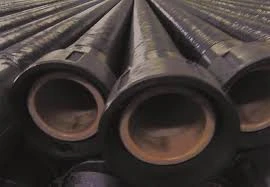
-
 Afrikaans
Afrikaans -
 Albanian
Albanian -
 Amharic
Amharic -
 Arabic
Arabic -
 Armenian
Armenian -
 Azerbaijani
Azerbaijani -
 Basque
Basque -
 Belarusian
Belarusian -
 Bengali
Bengali -
 Bosnian
Bosnian -
 Bulgarian
Bulgarian -
 Catalan
Catalan -
 Cebuano
Cebuano -
 China
China -
 China (Taiwan)
China (Taiwan) -
 Corsican
Corsican -
 Croatian
Croatian -
 Czech
Czech -
 Danish
Danish -
 Dutch
Dutch -
 English
English -
 Esperanto
Esperanto -
 Estonian
Estonian -
 Finnish
Finnish -
 French
French -
 Frisian
Frisian -
 Galician
Galician -
 Georgian
Georgian -
 German
German -
 Greek
Greek -
 Gujarati
Gujarati -
 Haitian Creole
Haitian Creole -
 hausa
hausa -
 hawaiian
hawaiian -
 Hebrew
Hebrew -
 Hindi
Hindi -
 Miao
Miao -
 Hungarian
Hungarian -
 Icelandic
Icelandic -
 igbo
igbo -
 Indonesian
Indonesian -
 irish
irish -
 Italian
Italian -
 Japanese
Japanese -
 Javanese
Javanese -
 Kannada
Kannada -
 kazakh
kazakh -
 Khmer
Khmer -
 Rwandese
Rwandese -
 Korean
Korean -
 Kurdish
Kurdish -
 Kyrgyz
Kyrgyz -
 Lao
Lao -
 Latin
Latin -
 Latvian
Latvian -
 Lithuanian
Lithuanian -
 Luxembourgish
Luxembourgish -
 Macedonian
Macedonian -
 Malgashi
Malgashi -
 Malay
Malay -
 Malayalam
Malayalam -
 Maltese
Maltese -
 Maori
Maori -
 Marathi
Marathi -
 Mongolian
Mongolian -
 Myanmar
Myanmar -
 Nepali
Nepali -
 Norwegian
Norwegian -
 Norwegian
Norwegian -
 Occitan
Occitan -
 Pashto
Pashto -
 Persian
Persian -
 Polish
Polish -
 Portuguese
Portuguese -
 Punjabi
Punjabi -
 Romanian
Romanian -
 Russian
Russian -
 Samoan
Samoan -
 Scottish Gaelic
Scottish Gaelic -
 Serbian
Serbian -
 Sesotho
Sesotho -
 Shona
Shona -
 Sindhi
Sindhi -
 Sinhala
Sinhala -
 Slovak
Slovak -
 Slovenian
Slovenian -
 Somali
Somali -
 Spanish
Spanish -
 Sundanese
Sundanese -
 Swahili
Swahili -
 Swedish
Swedish -
 Tagalog
Tagalog -
 Tajik
Tajik -
 Tamil
Tamil -
 Tatar
Tatar -
 Telugu
Telugu -
 Thai
Thai -
 Turkish
Turkish -
 Turkmen
Turkmen -
 Ukrainian
Ukrainian -
 Urdu
Urdu -
 Uighur
Uighur -
 Uzbek
Uzbek -
 Vietnamese
Vietnamese -
 Welsh
Welsh -
 Bantu
Bantu -
 Yiddish
Yiddish -
 Yoruba
Yoruba -
 Zulu
Zulu
fiberglass food grade equipment
The Importance of Fiberglass Food Grade Equipment in the Food Industry
In the modern food industry, safety and hygiene are paramount. With the increasing demand for high-quality food products, manufacturers must ensure that their equipment meets stringent safety standards. One of the most effective materials that have risen to prominence in this domain is fiberglass. Known for its durability, lightweight composition, and non-reactive properties, fiberglass food grade equipment is becoming an essential component of food processing, storage, and transportation.
Understanding Food Grade Fiberglass
Food grade fiberglass is a specially treated composite material designed to comply with food safety regulations. It is manufactured to withstand harsh conditions without leaching harmful substances into the food products. This ensures that the integrity of the food remains intact, while also maintaining peak sanitary conditions. The material is resistant to mold, bacteria, and chemicals, making it a smart choice for any food-related operation.
Durability and Longevity
One of the primary advantages of fiberglass equipment is its impressive durability. Unlike traditional materials such as metal or wood, fiberglass does not rust, corrode, or degrade over time. This longevity equates to a lower total cost of ownership, as businesses can rely on their fiberglass equipment for years without needing extensive maintenance or replacement. Moreover, fiberglass can withstand extreme temperatures, making it suitable for various processes, from refrigeration to cooking.
Lightweight and Easy to Handle
The lightweight nature of fiberglass equipment simplifies transportation and installation. In large-scale operations where efficiency is critical, reducing the weight of equipment can significantly streamline processes. Employees can easily move fiberglass containers, tables, or storage units without the risk of injury or the need for special handling equipment. This ease of use fosters a more productive work environment in busy kitchens or food processing facilities.
fiberglass food grade equipment

Non-Reactive Properties
Another significant advantage of fiberglass food grade equipment is its non-reactive properties. Unlike some metals that may react with acidic or alkaline foods, fiberglass remains inert, preserving the flavor and quality of the food. This characteristic is particularly crucial in industries that deal with various food types, ensuring that no unwanted chemical reactions compromise product integrity.
Compliance with Food Safety Standards
Compliance with food safety standards is non-negotiable in today’s regulatory environment. Fiberglass food grade equipment is often manufactured to meet or exceed international food safety standards. Industries such as catering, food processing, and restaurant services can benefit from using equipment that aligns with these stringent regulations. This not only safeguards consumer health but also reinforces a company's commitment to quality standards.
Applications of Fiberglass Equipment
The versatility of fiberglass food grade equipment allows for its use in a variety of applications. In processing facilities, you might find fiberglass tanks for fermentation or storage, while in kitchens, fiberglass countertops and tables are popular due to their hygienic surfaces. Containers made from fiberglass are also commonly used for transporting food, ensuring that products remain safe and uncontaminated during delivery.
Conclusion
As the food industry continues to evolve, adopting innovative materials like fiberglass becomes increasingly vital. The combination of durability, lightweight convenience, non-reactive characteristics, and compliance with food safety standards makes fiberglass food grade equipment a top choice for food professionals. By investing in quality materials, businesses safeguard their products and demonstrate a commitment to maintaining high standards of food safety and customer satisfaction. Whether in a bustling kitchen or a large-scale food processing plant, fiberglass equipment is redefining efficiency and safety in the food industry.









